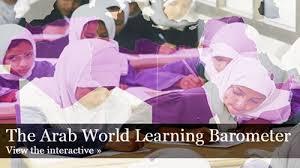Think tank finds education in Arab countries is falling short
Another finding of the report was that girls attend school less often but are more likely to continue on to secondary education. Girls outperform boys in learning but are much less likely to find a job when they finish their studies. An average of 24% of women are in the labor force compared to 77% of men. The study covered 20 Arab countries in the Middle East and North Africa and combined data using four indicators of educational success.
The data was collected from 2001-2012 and hence does not take into account much of the effects of the Arab uprisings. The report notes that the Syrian war has resulted in a severe crisis for the country’s youth. Enrollment in primary education was 93% prior to the conflict. Furthermore, around 90% of Syrian refugee children between the ages of six to 17 are not attending school and more than 3,000 schools have been destroyed according to data supplied by UNICEF USA.
The report notes that there are large variations among the countries. For example, per capita GDP is $1,361 in Yemen and $89,736 in Qatar. The United Arab Emirates is ranked 41 out of 186 countries according to The Human Development Index while Sudan is ranked 171. The annual HDI reports are published by the United Nations Development Program and measure development using indicators such as life expectancy, education, and income.
“The evidence presented above suggests that urgent action is needed to improve Arab children’s and youth’s foundational skills to enable them to progress in school and find decent work,” concluded the report.
Ariel Ben Solomon

